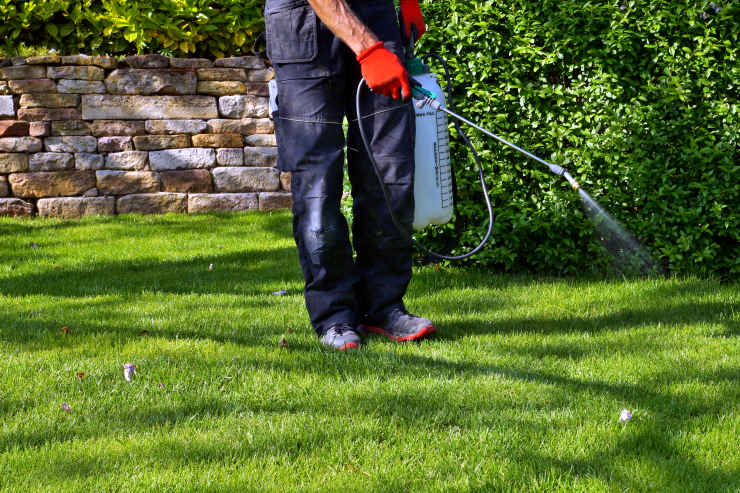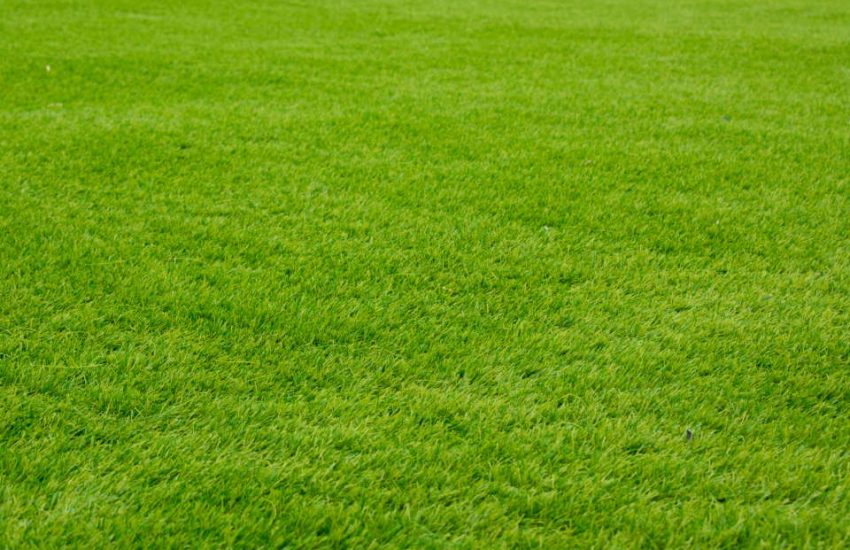Tips for Growing Lipstick Plants
The lipstick plant—which varies among Black Pagoda, Curly Leaf, Mona Lisa, Rasta, and Variegated- is a simple and basic houseplant no matter how tropical it is. Noting this, when providing the lighting and humidity precisely perfect as well as the soil and irrigation, your plant will grow beautifully and healthily.
Even though these flowers are epiphytic—growing on trees and receiving nutrients and humidity from the air, they are quite suitable for growing at home in regular potting. However, it would help if you considered being careful about the over or under-watering and moisturizing and the over and direct exposure to the sunlight.
Here are four main components under the tips to follow while growing lipstick plants:
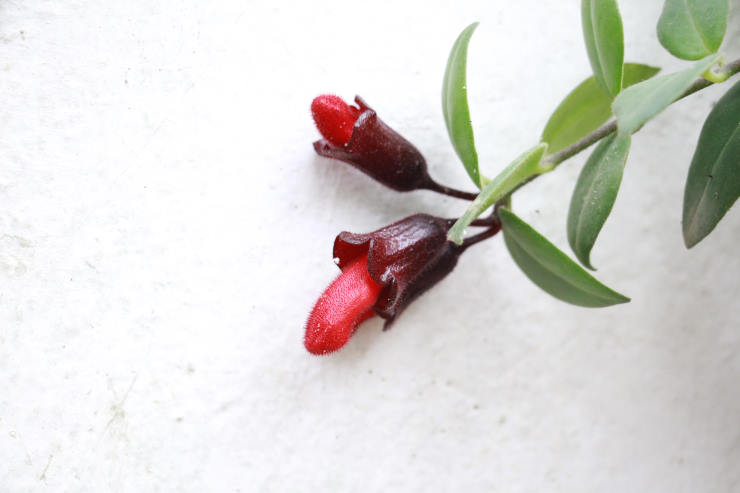
1. Soil & Spot
It is necessary to be careful in choosing the pot of this ornamental plant—suitable for growing at home and in the soil. Plus, although it can bloom in any soil in greenhouses, it may not adapt to all types of soil in the home environment. For this reason, it will be much healthier for the flower to choose airy soil and humidity-retaining when growing in the home environment.
Moreover, as well as soil selection and pot and root status will affect the development of the flower. For example, if you place the lipstick flower in a pot that is a little more than it needs (but not too big) where its roots can spread widely, you may encounter much more productive results. In addition, if you mix the soil well, it prevents the flowers from falling out before they bloom and their roots grow healthily.
- The choice of soil made of a mixture of sand and sphagnum moss prevents the plant from drying out and over-compaction, allowing it to grow more efficiently.
- Blended with coarse sand and perlite or pumice, the soil absorbs excess water and prevents the flower from being damaged. Therefore, if you are obligated or tend to overwater, you can thresh your soil this way.
- A hanging basket is an ideal pot for lipstick plants; its vines can grow on wood slabs easily, and the humidity level will be adequate.
- The lipstick plants grow and bloom best when they are root-bounded, so, do not replace them unless necessary. To understand its time, check the roots if they filled the pot and emerged through the drainage holes.
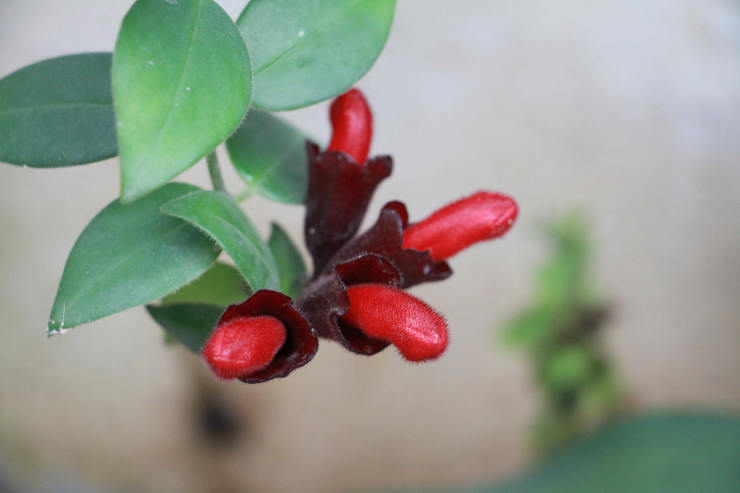
2. Water & Humidity
Do not forget that the lipstick flower loves humidity very much. As stated above, the soil should retain moisture, as well as it should be moistened when it dries. Also, due to its tropical origin, it is a humidity-loving plant, and it should be kept in an airy environment. Especially in summer evenings, your flower will like it if you spray it with a small spray bottle.
The irrigation interval is proportional to the average soil loss of wetness. But do not forget that the watering routine should be changed during the blooming period of this flower. During the flowering period, it is necessary to give enough water to flow abundantly from the bottom of the pot. Therefore, when the buds become prominent, you should irrigate with a small amount of water. In addition, make sure that the irrigation water is not calcareous or too cold; room temperature will be good enough.
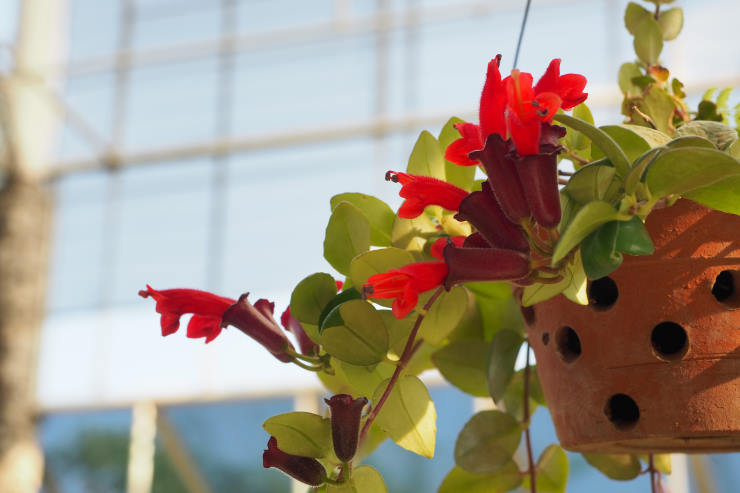
- The biggest mistake made in shedding plant leaves is not providing sufficient irrigation. In such cases, you should dip your finger an inch into the soil to see if it is dry. If it is wet, wait a while to absorb the water before re-watering.
- To avoid fungal leaf spot diseases and pests besides to keep it healthy, you should do regular misting in the morning as they love high humidity.
- If the leaves of the lipstick plant are turning yellow and starting to fall, remember that there is a problem with the watering routine; it needs more water.
- If browning has occurred on the leaf surface and edges, your flower is not watered enough; water it more regularly.
- They like to be kept in a humidity of 50 to 60%.
- To regulate the humidity of the environment they are in; you can supply a humidifier or place their pots on a tray filled with pebbles.
- To avoid risking their roots, be sure not to soak the soil.
3. Sunlight & Temperature
Lipstick plants love sunlight and warmth as much as they love moisture. Therefore, it does not give efficient results when sufficient sunlight is not provided. It grows by feeding from sunlight at certain intervals without being exposed to the sun all day. That is, it should be exposed to sunlight indirectly, not directly.
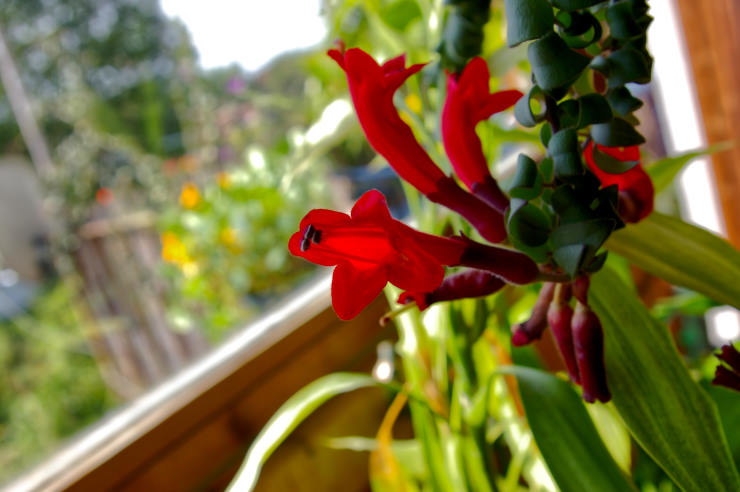
What’s more, direct and excessive sunlight causes leaf scorch and drop. Therefore, adequately filtered sunlight will be the healthiest for them. As stated above, yellowing or browning on the leaves indicates that it has not been watered enough and has been exposed to too much sunlight.
As for the temperature, a minimum of 70 to 80 F is a good air and soil temperature for the blooming of the lipstick plant.
- Starting lipstick plant growing from cuttings, 70 F is the greatest temperature for blooming.
- Do not filter the sunlight in the winter as the plant does not bear the cold and dark atmosphere. From May to September, you can care for it outdoors in filtered sunlight, but then a cold-protected environment should be provided.
- 50 F is a risky temperature causing dark red leaves and endangering the plant’s health; 65 F is the limit. Freezing weather is lethal to them, and prolonged exposure to temperatures below 65 F will cause them to stop growing and shed their leaves.
- Avoid putting the plants near windows receiving direct sunlight, which is too intense and can burn their foliage.
4. Fertilizers & Nutrients
Fertilizer applied to the lipstick plant once or twice a month leads to a much healthier and more productive development, specifically in a regular pattern from spring to summer. Especially during the flowering and budding period, you should use slow-release fertilization. Likewise, do not forget to add a small amount of vitamin supplement to the fertilization routine to feed the plant.
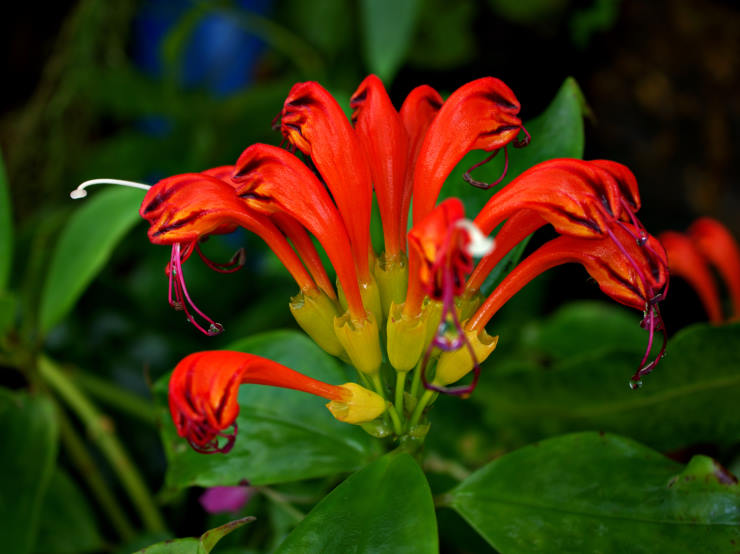
- Specifically, you can choose this direction, as liquid fertilizers keep the soil moist.
- Use organic fertilizers to produce much healthier and more productive results as it does not cause root-drying or burning problems.
- Compost tea is a well-organic and natural home fertilizer opinion for the plant.
- Neem oil—a powerful organic insecticide, is effective against the plant’s typical pests like aphids, spider mites, and mealy bugs. To avoid insects, you can use neem oil and organic insecticidal soaps together or apply them separately to your plant.
- You can also make an insecticide spray with a mixture of 1 tsp—mild liquid soap per 1 litre. In addition, you can rub the plant leaves with cotton dipped in alcohol, without exaggerating it, with gentle strokes so as not to harm the insects.
- Do not forget that lipstick flowers do not set seeds when grown inside since birds often fertilize them in the wild.
Conclusion
Ultimately, lipstick plants earned their name because they resemble lipstick pouring out of a tube when they bloom. They originated in Southeast Asia’s tropical climates. Although it is simple to grow as a healthy houseplant with appropriate water, sunshine, and soil, growers should be aware of and consider a few suggestions owing to some of its qualities, such as enjoying sunlight, heat, and humidity.
With this in mind, a well-mixed soil and environment that retains moisture should be created when this houseplant is grown. Along with this, the plant must keep watering at certain intervals and frequently in cooperation with adequate humidity.
Choosing its location based on the indirect sunlight and heat provided by filtering, especially in summer, also plays a vital role in terms of its health. In addition to providing all these substances, the plant’s growth should be supported, preferably by feeding it with organic fertilizers.
With all these steps and tips, your efforts will flourish with a healthy and good lipstick plant.
You may also be interested in:
How to Protect Trees and Plants From Insects and Sunburn

